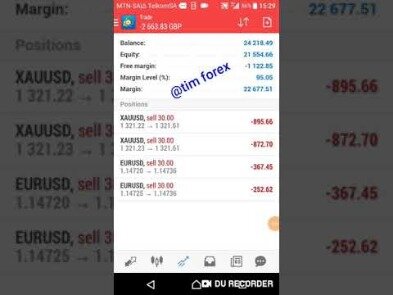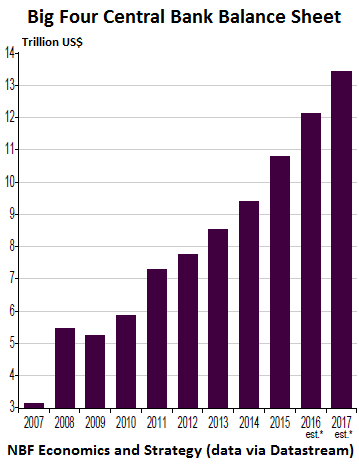
The ultimate guide to chart patterns are easier to understand when you truly follow what’s given. You need to carefully plot the support and resistance lines for each chart, which makes your chart perfect for analysis. A cup is similar to the rounding bottom chart pattern whereas, a handle is similar to the wedge pattern.
It is generally considered a reversal pattern that typically signals an upcoming bullish trend after a period of a bearish trend or a period of consolidation. The pattern is formed by three successive price bottoms, with the middle bottom (head) being the lowest, and the two other bottoms (shoulders) being higher on both sides. The pattern is completed when the price crosses above the neckline, which is formed by connecting the high points of the two shoulders. This indicates that the bearish trend has reversed and the price is likely to continue its upward move.
Chart pattern of stocks are the graphical diagram made in technical charts of security that play an important role in stock market analysis. Data plotted on the charts are analysed based on old trends and patterns, which are expected to repeat naturally over some time. Trading volume plays a vital role in these patterns, often declining during the formation and increasing as the price breaks out of the pattern. By recognizing these patterns, you’re better able to anticipate the support/resistance levels these patterns create. As with any widely followed kind of support/resistance, you need to be aware of it to anticipate the support/resistance levels.
Learn the patterns of accumulation (buying), distribution (selling), and stalemate (sideways action), and you’ll be well on your way to exploiting opportunities. Chris Douthit, MBA, CSPO, is a former professional trader for Goldman Sachs and the founder of OptionStrategiesInsider.com. His work, market predictions, and options strategies approach has been featured on NASDAQ, Seeking Alpha, Marketplace, and Hackernoon. The double bottom occurs when there are two troughs at the same height, indicating that sellers are in a weaker position than they were.
For example, if the price was in an uptrend prior to forming the symmetrical triangle, then the breakout is likely to be upwards. Conversely, if the price was in a downtrend, then the breakout is likely to be downwards. The pennant or flags pattern is a powerful tool that traders use to determine the direction of chart formation patterns the market trend. When this pattern appears on a chart, it indicates a temporary pause or consolidation in the market before the price continues in the same direction as the prevailing trend. When it comes to forex trading, “head and shoulders” is a term used to describe a popular technical analysis pattern.

The chart patterns are the patterns drawn from the buying and selling of stocks which are happening in the markets every day. You can learn to use these patterns for future prediction and the direction of the stock market. Moreover, you can also learn about candletsick pattern lists in the coming blogs. Chart patterns form shapes of price action using trendlines, which can help forecast future price behavior.
Reversal Chart Patterns
The two trendlines can converge over a time of several days, few weeks or months and must stay within the wedge’s confines the entire time. Traders watch for a price breakout from the upper trendline once the pattern is verified. This suggests that the market will eventually turn bullish as buyers take https://trading-market.org/ over. Inverted cup and handle is a chart pattern which is identical to the cup and handle, except for the fact that once it forms bearish trend is expected to continue. This is the reason this chart pattern is one of the continuation chart patterns as it represents the retracement of the higher trend.
In fact, you could almost trade without candles using this chart pattern, though we don’t recommend doing that. The double bottom signals to potential traders that the stock is having a hard time making new lows. As a result, long-biased traders may take advantage of the opportunity by buying the stock and risking off the support of the « W ». In our tutorial on descending triangles, we teach you a handful of ways to trade this pattern.
- When we deal with a chart pattern, we need to look at it « from a distance » or switch to a linear chart.
- Calculating the upper price target is reasonable by measuring the high and the low inside the closed structure.
- Generally, a flag with an upward slope (bullish) appears as a pause in a down trending market; a flag with a downward bias (bearish) shows a break during an up trending market.
- Most conventional chart analysis only focuses on the highs and lows themselves, but an important part is understanding what happens between the highs and lows.
- The trading strategy is based on the idea that there are two types of price gaps in the modern market.
Then, we measure the depth of the W and apply that to our breakout entry to get a potential target. For all intents and purposes, the simple way to spot one of these is to draw a trend line across the top and bottom of the most recent price action of the stock in play. If you find that stock coiling into an apex, it is likely forming a triangle pattern. However, with 15 seconds remaining in the formation of the candle, selling pressure returns. This pushes the price of the stock back to $1.25, and forms the upper wick of the candle.
Know the 3 Main Groups of Chart Patterns
Pennants are continuation patterns drawn with two trendlines that eventually converge. A key characteristic of pennants is that the trendlines move in two directions—one will be a down trendline and the other an up trendline. Often, the volume will decrease during the formation of the pennant, followed by an increase when the price eventually breaks out. In order to talk about reversal chart patterns, it needs to be preceded by a trend. The reversal pattern will then signal a reversal of the current trend. We have mentioned that the reversal pattern that occurs on the top of the trend is called a distribution and the reversal pattern that occurs at the bottom of the trend is called an accumulation.

Conversely, the pattern is referred to as a diamond bottom or a bullish diamond pattern due to its bullish meaning when a diamond occurs in a bear market. 6) There are more advantages when comparing to the dis-advantages of chart patterns. Trade forex chart pattern carefully as per the strategy on “How to trade chart patterns?
How to withdraw the money you earned with FBS?
The value of candlesticks, which have been around for centuries, is in the story they tell. As you can see from the image above, a single candlestick shows the open, high, low, and close of the price action during that time interval. This is all very basic information until you realize that candlesticks are telling a story of buyers and sellers during that timeframe. A trendline that angles up, or an up trendline, occurs where prices are experiencing higher highs and higher lows. Conversely, a trendline that is angled down, called a down trendline, occurs where prices are experiencing lower highs and lower lows.
It is needless to say that criteria to enter a position must be clearly defined with a proper fundamental and technical analysis. If you are unsure about identifying the trading pattern, Autochartist is the analytical service for recognizing the trading patterns in the markets and analysing volatility on all FTMO instruments. It provides traders with meaningful and performance-proven statistics that can help build an edge in the markets. The service is provided by FTMO to all traders with an active FTMO Challenge, Verification or FTMO Account. Stock chart patterns are lines and shapes drawn onto price charts in order to help predict forthcoming price actions, such as breakouts and reversals. They are a fundamental technical analysis technique that helps traders use past price actions as a guide for potential future market movements.
Gold Price Chart Very Strong, Able To Set New All-Time Highs – Investing Haven
Gold Price Chart Very Strong, Able To Set New All-Time Highs.
Posted: Sun, 07 May 2023 16:00:50 GMT [source]
To avoid a false break during the day, it is recommended to wait for the daily candlestick to close below the neckline. A pattern arises so that after the previous uptrend the left shoulder is first created when the price creates a new high and then drops to the point where it previously rose from (point A). In the second phase, the price rises and exceeds the previous peak, resulting in a higher high (point B), and then the price again falls to the central line, the so-called neckline (point D). Then the price rises again, but this time it creates only a lower high, so the uptrend structure is disrupted. The pattern is confirmed when the price crosses the neckline from top to down (see point E).
Head and Shoulders
The pattern mirrors the Double Top pattern, formed in the falling financial markets. This pattern is classified as one of the simplest ones, so, it is usually less efficient than the other chart patterns. In classical technical indicators analysis, a Double Top formation is classified as a reversal chart pattern. That is the trend, ongoing before the formation starts emerging, is about to reverse after the pattern is complete.
What are the patterns in a chart?
The most basic form of chart pattern is a trend line. Popular chart patterns include head and shoulder formations, double and triple tops and bottoms, pennants, flags, and wedges. Patterns can be based on seconds, minutes, hours, days, months, or even ticks and can be applied to a line, bar, candlestick charts.
One such pattern is the rounding bottom pattern, also known as a saucer bottom or a bowl. Once the second peak is formed, the price usually begins to move downwards, breaking through the support level that was established during the pullback. This signals the end of the uptrend and the beginning of a new downtrend. Once a trend line has been drawn, traders can use it to identify potential areas of support or resistance.
You can also apply stock chart patterns manually on your trading charts as part of our drawing tools collection. Before getting into the intricacies of different chart patterns, it is important that we briefly explain support and resistance levels. Support refers to the level at which an asset’s price stops falling and bounces back up. Resistance is where the price usually stops rising and dips back down. A diamond chart pattern is a technical analysis pattern commonly used to detect trend reversals.
The Double Top or the Double Bottom patterns are most often mentioned. In reality, there will be some deviations but the closer to the above rules, the more reliable the pattern will be. It is also possible to complement the analysis with other technical analysis tools, such as moving averages for example. The short entry can be either on the price level where the daily candlestick, that broke the neckline, closed.
In this case the line of support is steeper than the resistance line. This pattern generally signals that an asset’s price will eventually decline more permanently – which is demonstrated when it breaks through the support level. Diamond reversal patterns are seen in all financial markets, including the stock market, Forex market, cryptocurrency market, and futures markets. The diamond pattern is not as common as many other classic chart patterns.
On the left, price was increasing, then it pulls back and consolidates before breaking out of the falling wedge and continuing an additional leg higher. Price was decreasing, then it attempts to bounce and consolidates before breaking down from the rising wedge and making another leg lower. It is also not uncommon to see these patterns act as reversal points, like in the chart on the far right. Price was headed lower but is able to break out of the falling wedge to the upside and reverse course. Forex chart patter with reversal chart and price action strategies help you to trade important currency pairs such as EUR USD with small risk and high potential trading signal to make good profits. One of the most popular neutral pattern charts is the Symmetrical Triangle.
- As with all patterns, diamond chart patterns have both advantages and disadvantages.
- The formation, like a triangle, has waves inside; and they are, like in a triangle, the price moves up and down, from the high to the low.
- The main difference between a wedge and a triangle is that a wedge is an independent trend, while a triangle is an ending point of a trend.
Target profit is placed at the distance that is not longer than the total length of the three little candles and one big candlestick of the prevailing trend (Profit zone). A reasonable stop loss here is set a few pips above the local high of the longest candlestick in the pattern (Stop zone). You open a buy position after the first candlestick, following the price gap, opens (Buy zone).
Applying common rules to a specific pattern would be a mistake that hides a significant risk and may cause to losing money rapidly. You open a sell position when the price reaches or goes lower than the local low of the volume candlestick (Sell zone 2). Target profit is put at the distance shorter than or equal to the distance between the candlestick open price and its low (Profit zone 2). A stop loss in this case can be set at the local high of the volume candle (Stop zone 2). There is the GBPUSD currency pair Forex chart that represents quite a seldom formation that is, in my opinion, is one of the most efficient raw price action patterns of technical indicator analysis.
What are the 3 main groups of chart patterns?
Chart patterns fall broadly into three categories: continuation patterns, reversal patterns and bilateral patterns.